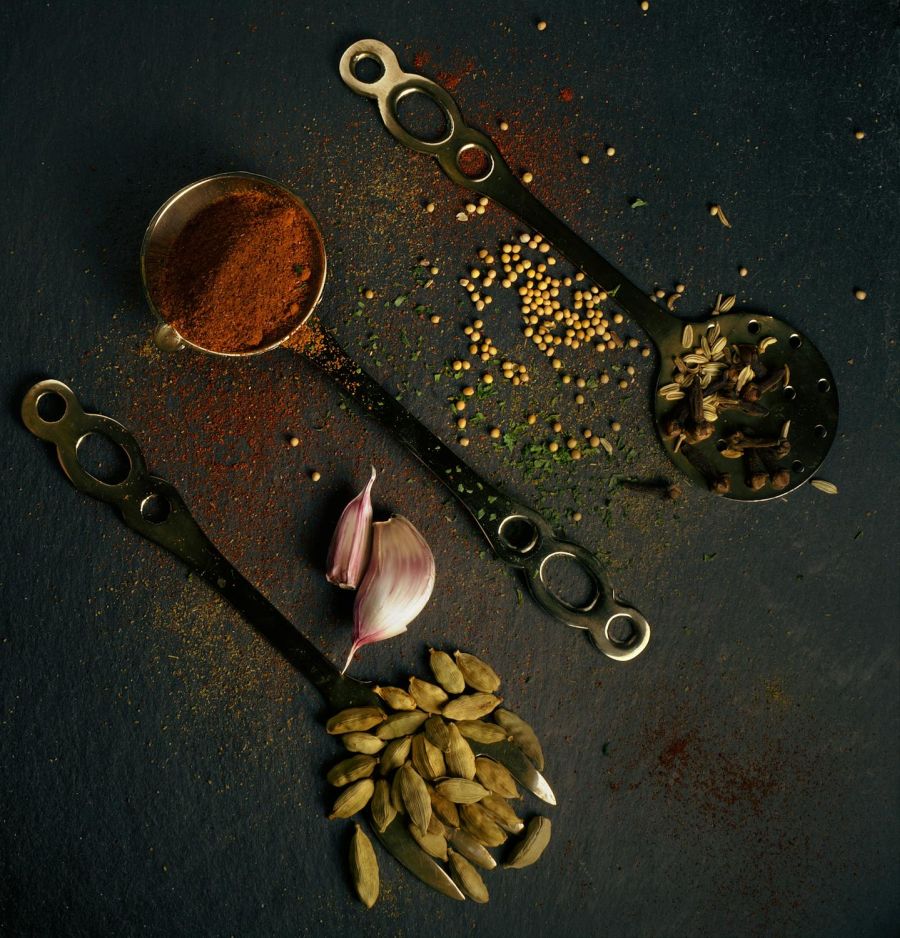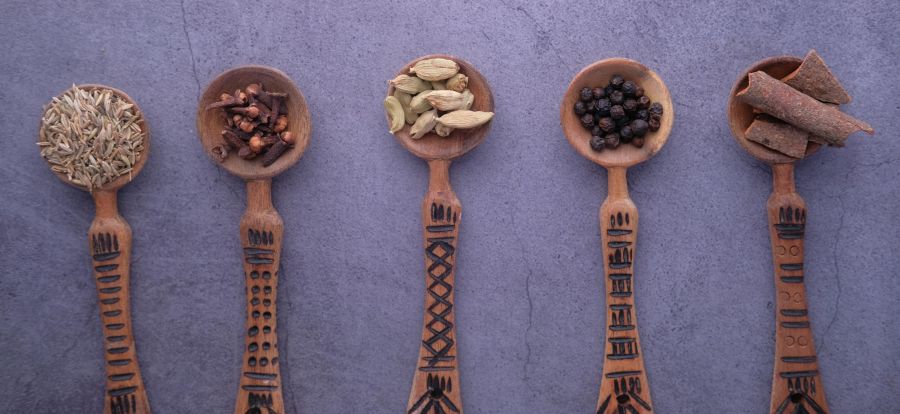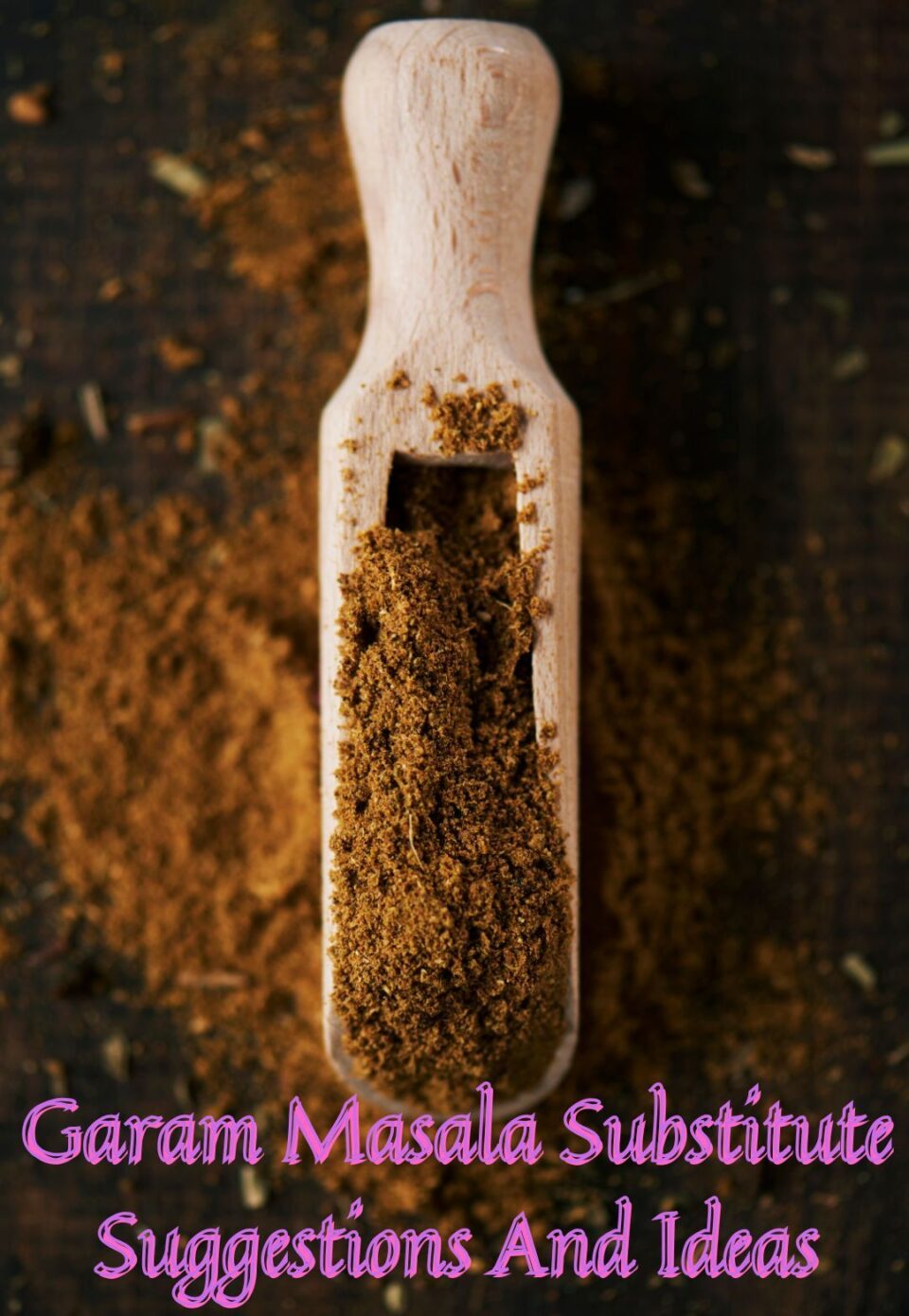When in need of a garam masala substitute, the smart idea is to look at the spice rack and see if there are available options. The flavors of garam masala are not as easily carried by other commercial spice blends.
As the saving grace, versatile as garam masala is, it can also be quite flexible and forgiving for its recipe. This spice blend can contain a whole laundry list of spices, or just a handful if you want a quick fix.
On the other hand, if such an option isn’t available, working with other spice blends can be useful. In this article, we’ll consider some of the other spice blends as well, which might be worthy substitutes.
Generally, the best substitutes for garam masala are some blends of spices, DIY garam masala, chana masala/chole masala, chat masala, and curry powder.
There are some intricacies involved with such substitutions, especially when using other spice blends. As such, I’ll discuss these in some detail,so picking the right option becomes easier.
Table of Contents
Top Substitutes For Garam Masala – Spice Mixes And Blends Of Note
Given how garam masala works, it’s possible to put the options into two categories or styles – one where you’d have to mix the spice combination yourself, and the other where commercially available spice blends could fill the role.
In my opinion, spice mixes made by the user at home would be more adept to actually substitute garam masala while keeping its desired characteristics. Commercial blend alternatives, while workable aren’t always the best choice. After all, they have their own specific roles and don’t necessarily fit into the role of the garnish, which garam masala occupies.
With that preamble and understanding, here are a few spice mix ideas you could put into action at home.
1. DIY Garam Masala

As I see it, the best option is to whip up a quick batch of garam masala. This article contains a recipe for a quick garam masala blend.
Of course, there’s always room to delve into more complex blends for the masala if you wish to, but a basic combination should fulfill the purpose of a substitute just fine.
It may not be as refined an ingredient as the original mix, but a basic garam masala recipe would still work better than alternate spice blends and mixes.
2. Allspice With Cumin
This combination can work as a quick and simple garam masala substitute. Allspice is not an Indian origin spice and usually doesn’t find a place in garam masala recipes. It is, however, quite a useful spice and works rather well in most settings, including as a substitute for garam masala.
After all, allspice gets its name for having flavor undertones similar to several spices, including cloves, cinnamon, and nutmeg. This combo looks just the right fit for garam masala.
As for this substitution, with just two spices in the mix, things get a whole lot easier. The general formula here is to use one part of cumin and a quarter part of allspice. So, if you’re using one teaspoon of cumin, using a quarter teaspoon of allspice should be enough. Using a kitchen scale might be helpful, since spoons don’t really give a good sense of measurement for spices like these two.
Dry roast the cumin and then the allspice in a pan. Let them cool, and then grind the mix to get a quick alternative to garam masala.
3. Cinnamon, Cloves, And Cumin (or Fenugreek)
Cinnamon and cloves provide a good combination for a quick garam masala replacement. Although excellent, this combination is a bit to the fresh and sweet side of the taste buds. And thus, something is necessary to give the recipe a bit of pungency that can balance the flavors.
In a conventional setting, the pick is usually cumin. It’s easy to work with and provides a nice texture and overall flavors to the combination.
However, if you don’t intend to use cumin, fenugreek can be a workable option. This spice provides some pungency, but it’s more on the bitter side of things. And that’s precisely the reason it’s usually not the top choice for such a change.
The combination makes use of one part each of cinnamon and cloves. If you’re using cumin,one part cumin should be enough. As usual, roast the spice, let them cool, and then grind the mix to get a powder.
On the other hand, a bit of extra caution is useful when working with fenugreek. Use only a small amount, perhaps ¼ part or ⅓ part. Skip roasting fenugreek, since it gets more bitter that way. Instead, just put it in the grinder with the other (roasted) spices.
4. Cardamom, Cumin, And Coriander Seeds
Coriander seeds are sort of an unsung hero of the spice world. They provide a warm, citrusy, and somewhat earthy flavor, making them just the right fit for garam masala. Plus, they work rather well with cumin seeds. This combination is enough to bring a semblance of aroma and warmth to our quick garam masala replacement.
But, it still lacks in terms of aroma and freshness. That can come with the use of cardamoms. Regular cardamoms can work in this scenario but if possible getting hold of a black cardamom would amp up the flavor complexity quite nicely.
The ratio should be two parts of coriander seeds, one part of cumin seeds, and ½ part cardamom (or just one black cardamom). As usual, roast the spices, then let them cool before grinding them for use.
5. The Tadka/Tarka Method
In Indian cuisine, there is a technique called tadka (also spelled tarka) where a flavorful combination with spices or other ingredients is created before being added to the main recipe. This technique goes by various names in different parts of India, but for our use, calling it tadka should suffice.
This technique is especially useful when an alternative to garam masala is desirable, and you don’t mind using whole spices rather than the powder.
Do keep in mind that this won’t result in an exact garam masala substitute, but it will create a nice and flavorful spice mix. Additionally, there is some skill involved with the method and the inexperienced run the risk of ending up with a burnt spice mix, rather than a flavorful one.
Of course, this also assumes you have the spices needed available at hand. Though this list isn’t exhaustive or mandatory, a good chunk of the spices used in garam masala can be used here.
These include cumin seeds, coriander seeds, cardamom (or black cardamom), cinnamon, cloves, curry leaves, bay leaves, black peppercorns, and fennel seeds.
To prepare the tadka, start with placing a skillet on medium to high heat. Add two or three tablespoons of oil to the skillet (use an oil with a high smoke point, canola oil is a good choice, olive oil is not useful).
Once the oil is hot enough, add the cumin. Interestingly, once the cumin is ready, it starts to make a cackling sound. For the inexperienced, this is also a good-enough way to judge when the oil is hot enough to start cooking. At this point, you can add the other spices as well. Give them time to cook, but keep stirring to make sure all the spices get cooked, but none burns. It’s more difficult than it sounds.
Once the spices have been cooked for a couple of minutes, add this mix to the cooked food and mix well so the flavor gets distributed. Many chefs prefer to take out the leaves before serving, since the texture doesn’t contribute to the food.
6. Curry Powder
Using curry powder to substitute for garam masala can be a workable option, especially for the western palate. While this masala isn’t used in India, it does represent the flavors of Indian cuisine for the western palate. Plus, it can be much easier to find and buy.
Curry powder includes several spices that also find their way into garam masala. So, it can create a rough approximation of the flavors. However, curry powder cannot be used as a garnish like garam masala.
Instead, it has to be added early, while the food is cooking, so the spices (especially turmeric) get some time to cook.
There are other drawbacks to using this masala. Turmeric is a major component of the curry masala and it will absolutely change the color of the recipe. So, use this option only if you’re prepared to have the recipe take on a yellow color.
Another issue is with the presence of turmeric as the key ingredient in curry masala. While there is a long list of ingredient spices for garam masala, turmeric almost never finds its way onto that list.
As I said, it’s a workable option, especially if you’re willing to accept the color change that this powder will bring to the recipe.
7. Other Indian Masala Blends

There are several other commercial masala blends from Indian cuisine that can fulfill the role of a garam masala alternative in some ways. Of course, these are not exact substitutes, but can be useful options. Some notable ones are:
- Sambar Masala: This is a complex masala blend for a recipe called sambar, which is especially popular in Central and South India. If using this to replace garam masala, the same method as that noted for curry powder is usable.
Namely, sambar masala cannot be used as a garnish as it must be cooked. Additionally, the presence of turmeric will affect the color of the recipe. - Chana Masala/Chole Masala: This masala blend shares its name with a chickpea recipe. It’s good for use as a garnish and actually includes garam masala as one of its major ingredients. However, the overall flavor is a bit on the tangier side.
- Chat Masala: This spice blend is used as a garnish for an assortment of Indian recipes called chat/chaat. Its composition is generally similar to garam masala, but it leans heavily into tangy flavors.
8. Other Spice Blends And Seasoning Options
So far, the list I’ve made here leans into Indian spices and blends as the solution for a garam masala substitute. This approach is generally used for substitutes, since it leans into the authenticity of the cuisine. However, no one said that it must be followed!
Global cuisine has been enriched with people experimenting with recipes or trying new things. There’s no reason to stop. Just make sure you have a good grasp of where you’re going with the change.
I’ve seen people recommend (and enjoy) Mexican-style Taco Seasoning, Moroccan-style Ras El Hanout, and Chinese-style Five Spice powder as alternatives to garam masala.
The point is, if it fits your taste preferences as a seasoning, it’s worth a try!
Garam Masala — Characteristics, Uses, And Recipe Variations
Garam Masala is a popular garnish in Indian cuisine. The name literally translates to warm (garam) spice (masala). This masala isn’t intended to be hot or spicy. Instead, the focus is on being flavorful, aromatic, and providing a warming sensation.
It shows off something of an earthy and fresh flavor, adding a fresh layer of flavor to the cooked food.
As a garnish, garam masala is usually sprinkled on top of the food right before serving and does not spend time cooking. However, garam masala isn’t exactly raw like a herb blend either.
What Is Garam Masala? Notes On The Masala And Its Recipe
There is no specific, empirical recipe for garam masala. This is a spice blend that can as easily work with a lot of ingredients, or with a much shorter list. The recipe can vary by person, commercial brand, or region, so there’s a lot of room to explore and experiment in creating or working with this spice blend.
Yet, it’s not complete anarchy. There are some core ingredients and flavors that any garam masala worth its proverbial salt must provide.
Most authentic recipes will contain the following ingredients or elements:
- Cumin seeds – for that mild pungency and earthy flavors
- Coriander seeds – for the warmth and aromatic flavor
- Black pepper – for some heat, spice, and aroma
- Cardamom – for the freshness, aroma, and flavor complexity
Several other spices also contribute to this set, giving garam masala its characteristic complex flavors and aroma.
Incidentally, most spices are toasted before their use in garam masala. That’s because many of the spices in the blend, like cumin or coriander seeds don’t feel very palatable unless cooked to some extent. Additionally, the toasting has an effect of making the spices more fragrant and flavorful.
Another note here is the use of cardamom. Most conventional North Indian recipes don’t use the conventional small green cardamom as a key element for garam masala. Instead the preference goes to greater cardamom, also known as hill cardamom or black cardamom.
Black cardamom is much larger than the conventional green cardamom. It has a similar freshness, though it also shows smoky flavor notes, which make it suitable for savory recipes, but not sweet recipes.
The shell of the black cardamom is quite hard and chewy. Which is why the shell is often removed before serving a dish. However, when used with garam masala, the greater cardamom stays intact and is toasted and ground for use with the masala.
Now that I’ve explained some of the secrets of garam masala, let’s get into the depths of flavors for a DIY recipe.
DIY Garam Masala Recipe

Let’s consider a somewhat straightforward garam masala recipe. My intention is to include the necessary elements without going overboard with the complexity of the flavors involved.
I’ve also kept the quantities small to allow for a small batch of the masala. That said, even with the smaller individual numbers, this cooks up a good batch, considering the number of ingredients involved.
Here’s what you need:
- Dried coriander seeds: 2 teaspoons
- Cumin seeds: 1 teaspoon
- Green cardamom: 1 teaspoon (alternative, 2 black cardamoms)
- Cloves: 1 teaspoon
- Cinnamon: 2-inch stick
- Black peppercorn: 1 teaspoon
- Fennel seeds: ½ teaspoon
- Bay leaves: one leaf, shredded to pieces
And here’s the process:
The process starts with dry roasting the spices. Put them in a pan or skillet (either all together, or roast each one separately) and roast on low to medium-low heat. Once the aroma of the spices starts wafting, you’re done roasting the spices. It might be useful to move the spices around so they get roasted evenly.
Once the spices are roasted, remove them from heat and let them cool.
The next step is to put all the spices in a spice grinder and run it until you get a powder. The garam masala is ready! Store it in an airtight container.
A Garam Masala Substitute Worth Its Spicy Goodness!
I think we’ve gone into good detail on the characteristics of garam masala and what could qualify to substitute the wonderful warmth and flavors of this famous garnish.
Even as we consider the substitutes and alternatives, the focus generally has to stay on spice blends and the flavors they present. After all, the warming sensations of garam masala, along with the rich aroma, aren’t easily replicated.
As such, going for a DIY blend of the masala can be the more viable option where taste authenticity is important. Using other spice blends from Indian cuisine or other cuisines around the world could work too, especially when an agreeable fusion of flavors is more important than the absolute flavor-authenticity of the substitute.

